Moon Phase Flags {tutorial}
Create a Visual Reminder of the Cycle
Moon flags are a beautiful and tangible way to ritualize the waxing and waning movements from full to new and new to full moon. Creating a visual tool that shows the building and releasing of each phase can help you connect with the energetics of the lunar cycle.
This Moon Craft tutorial is for double-sided paper moon flags. They can be made from fabric as well. Once you get the basics, you can improvise the design and embellish your flags as you desire.
One side of the flags has the waxing phases (new to full moon) and the other side has the waning phases (full to new moon).
After the full moon, switch the flags to display the waning moons. After the new moon, reverse the flags as a reminder that the moon is waxing and growing again.
Moon Phase Flags Tutorial
Materials List for Moon Phase Flags
three different colors of paper (the size of the paper will depend on how large you want to make the moon flags):
one color for sky/background
one for moonlight (rice paper or something transparent is nice)
one for the moon shadow (contrast color)
scissors
something circular to trace (mason jar/cup, small bowl)
pencil or pen
ruler - if you like to measure things
string or yarn about 2-3 feet in length depending on how long you want to make the flags
glue (one that dries clear, and not shiny, like the one I used in the video tutorial)
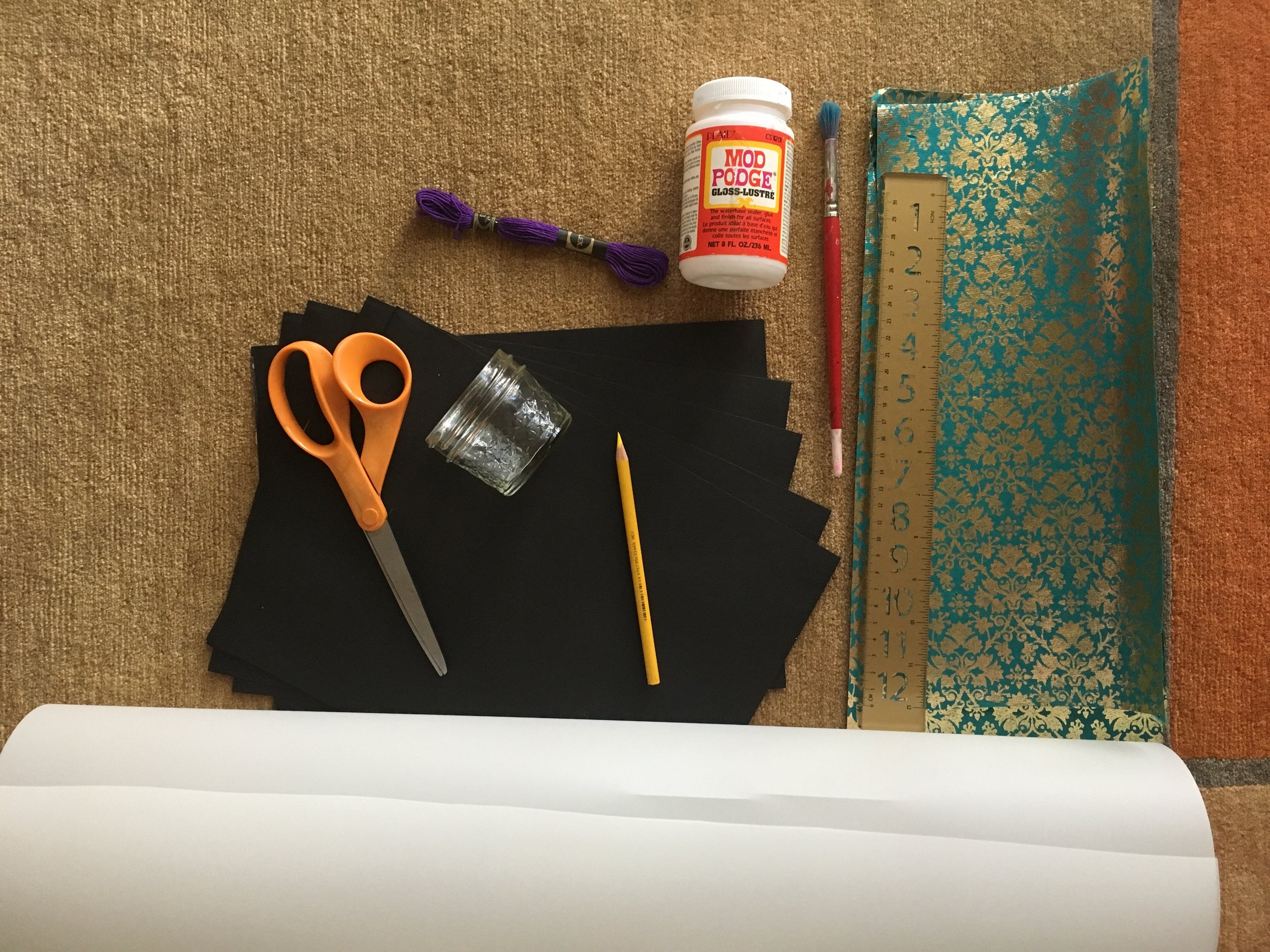
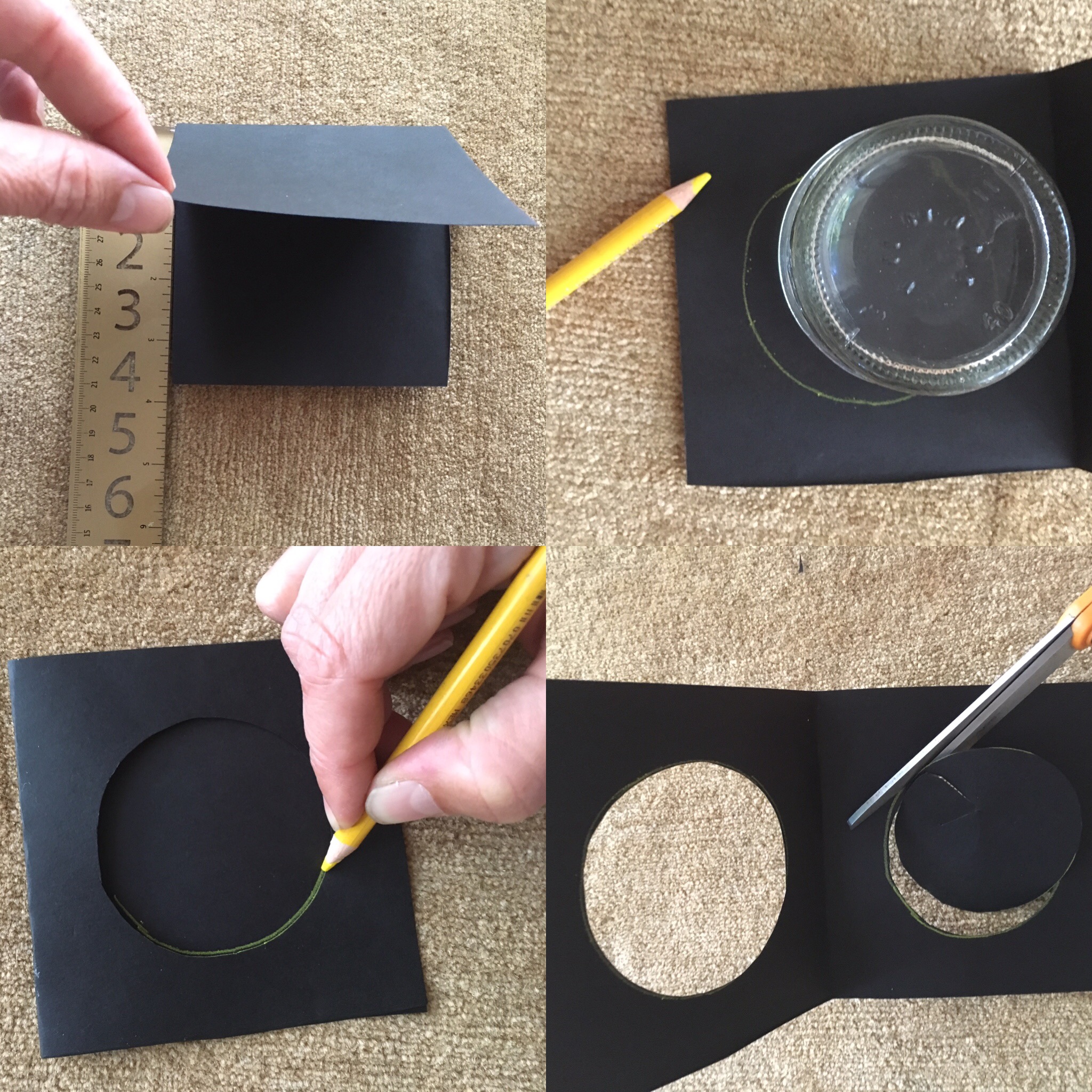
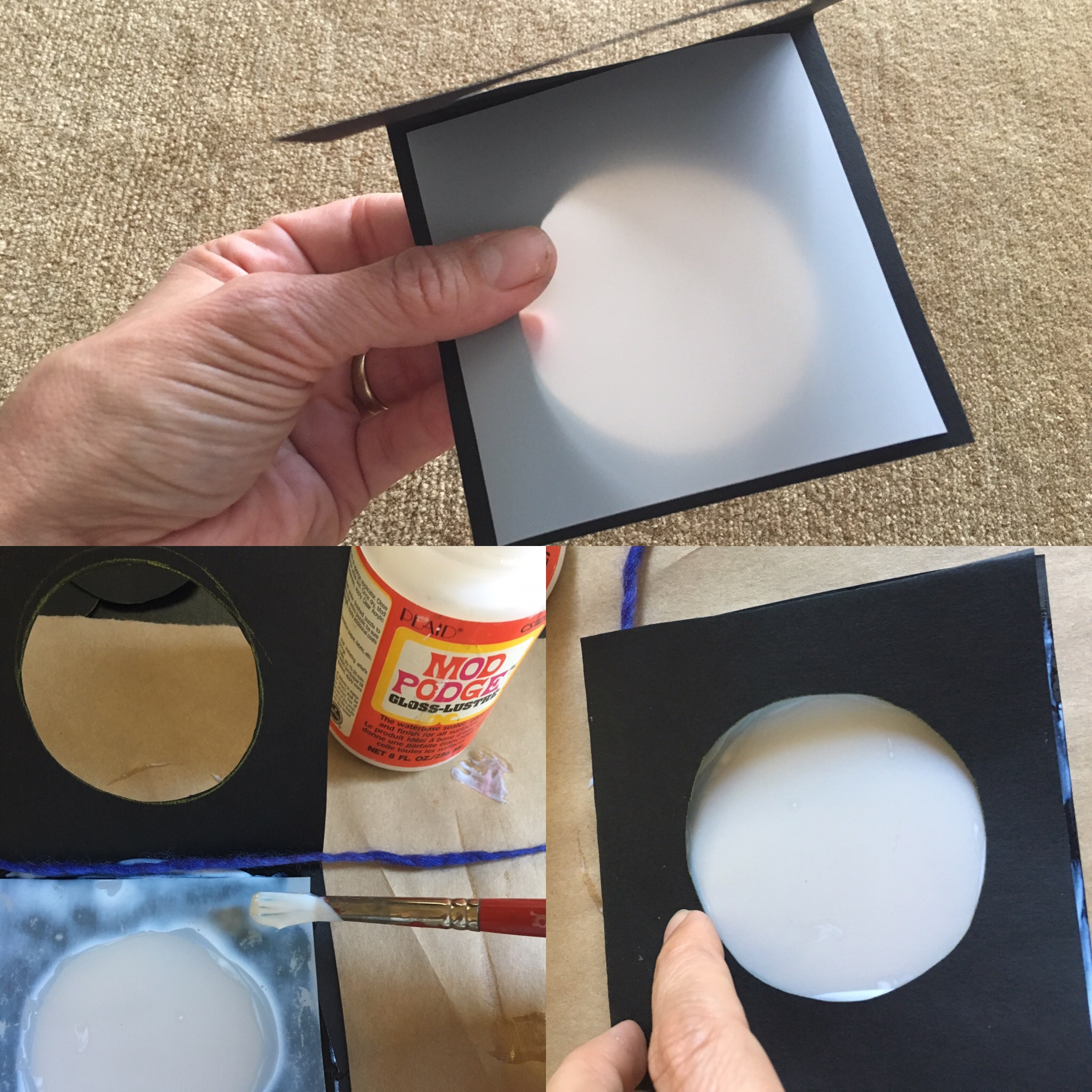
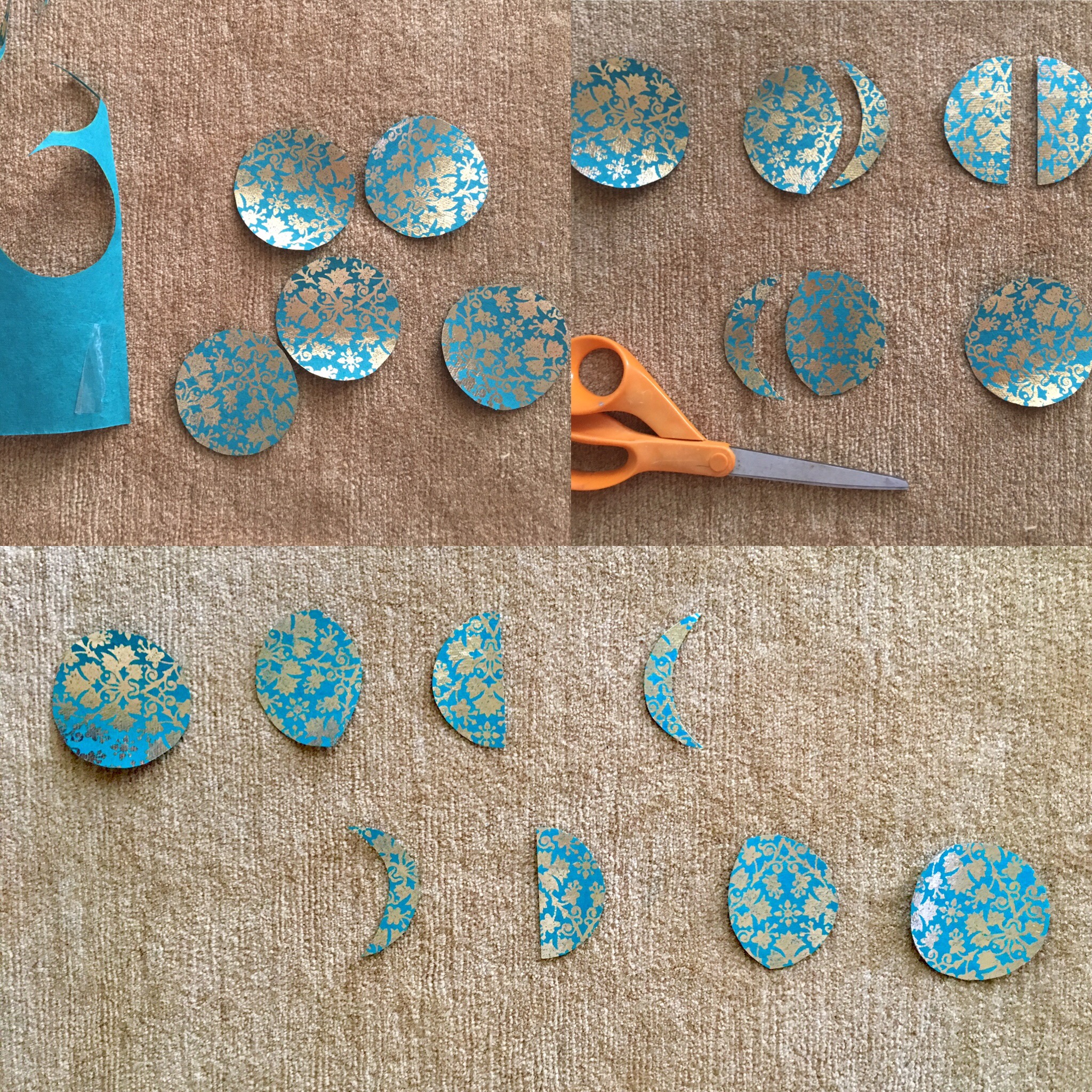
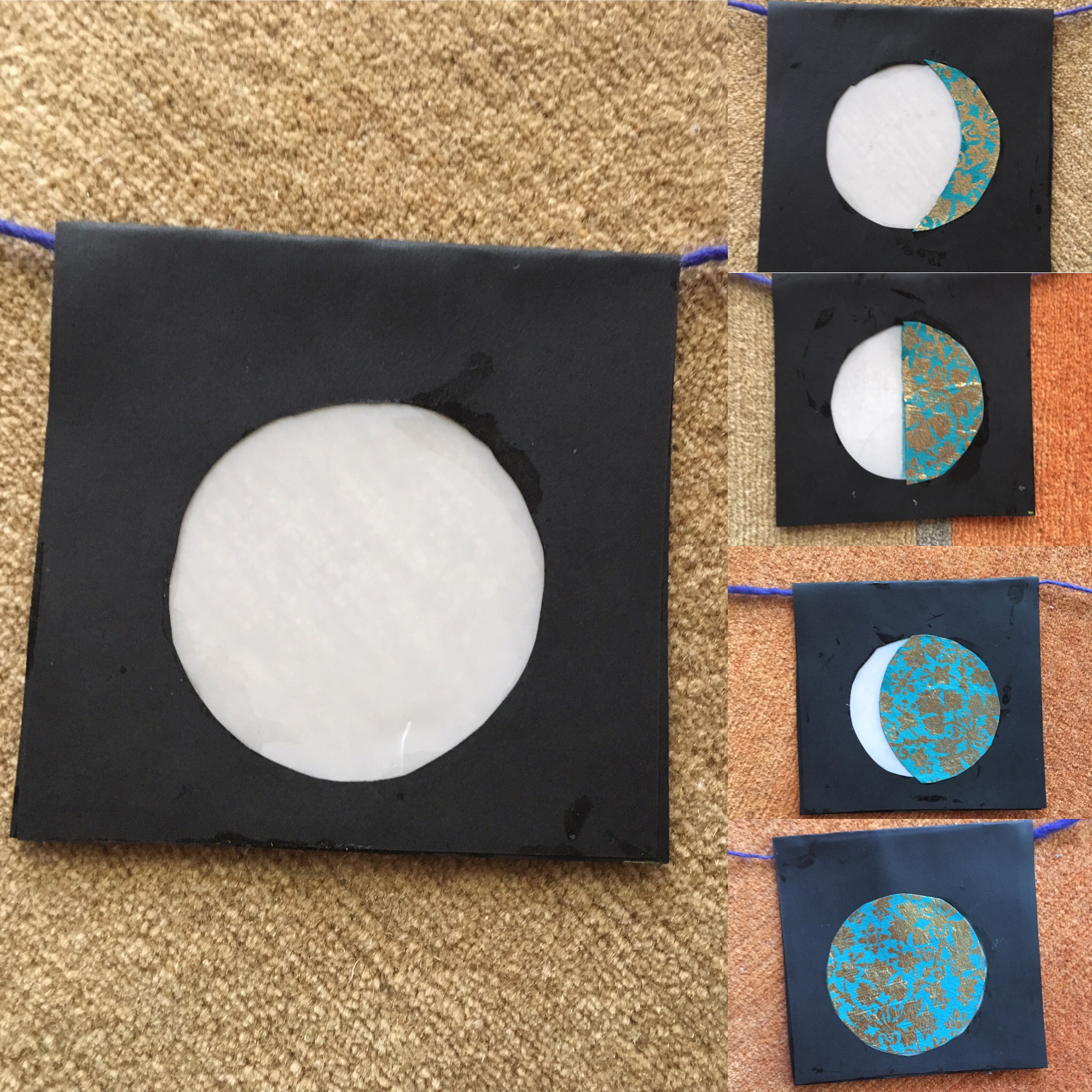
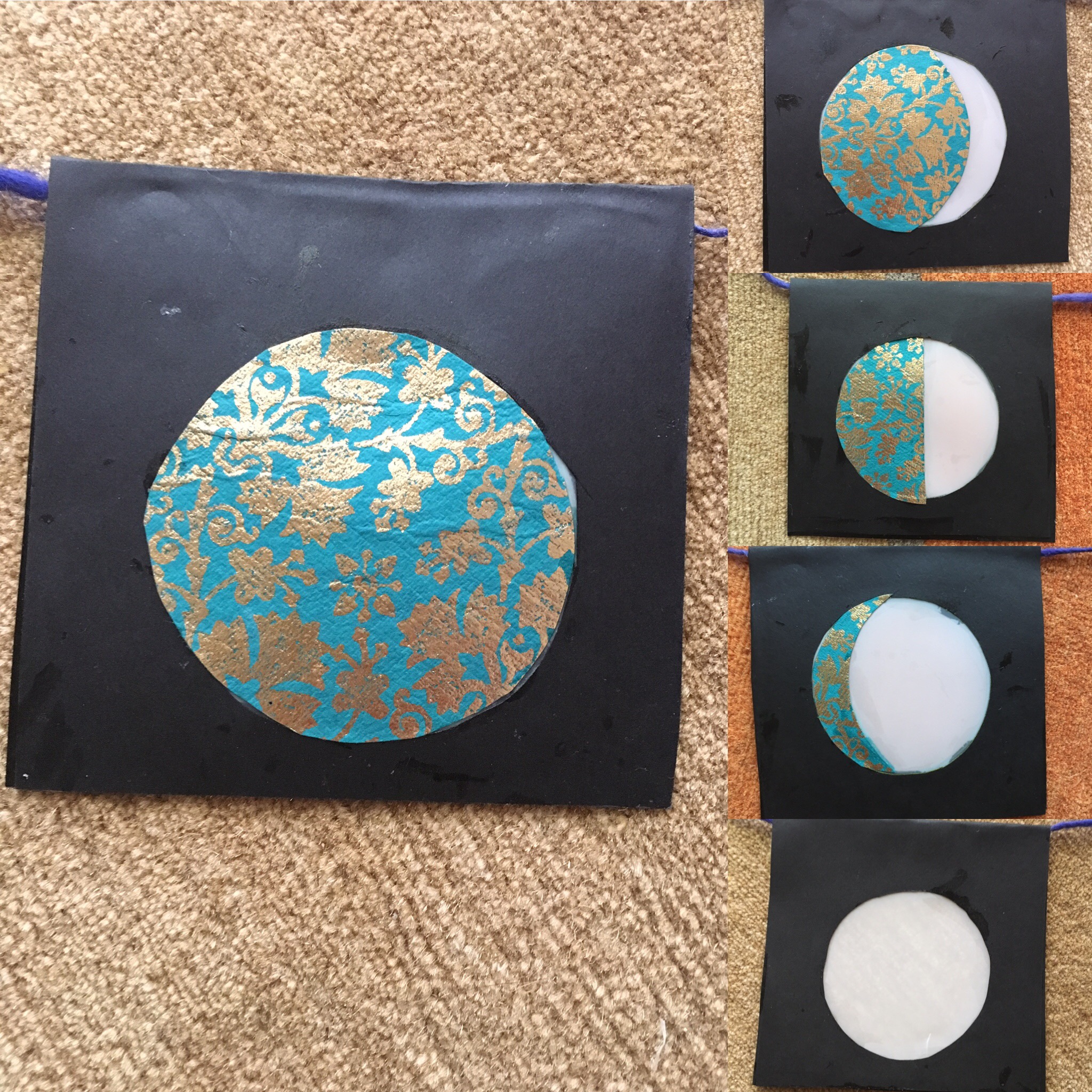
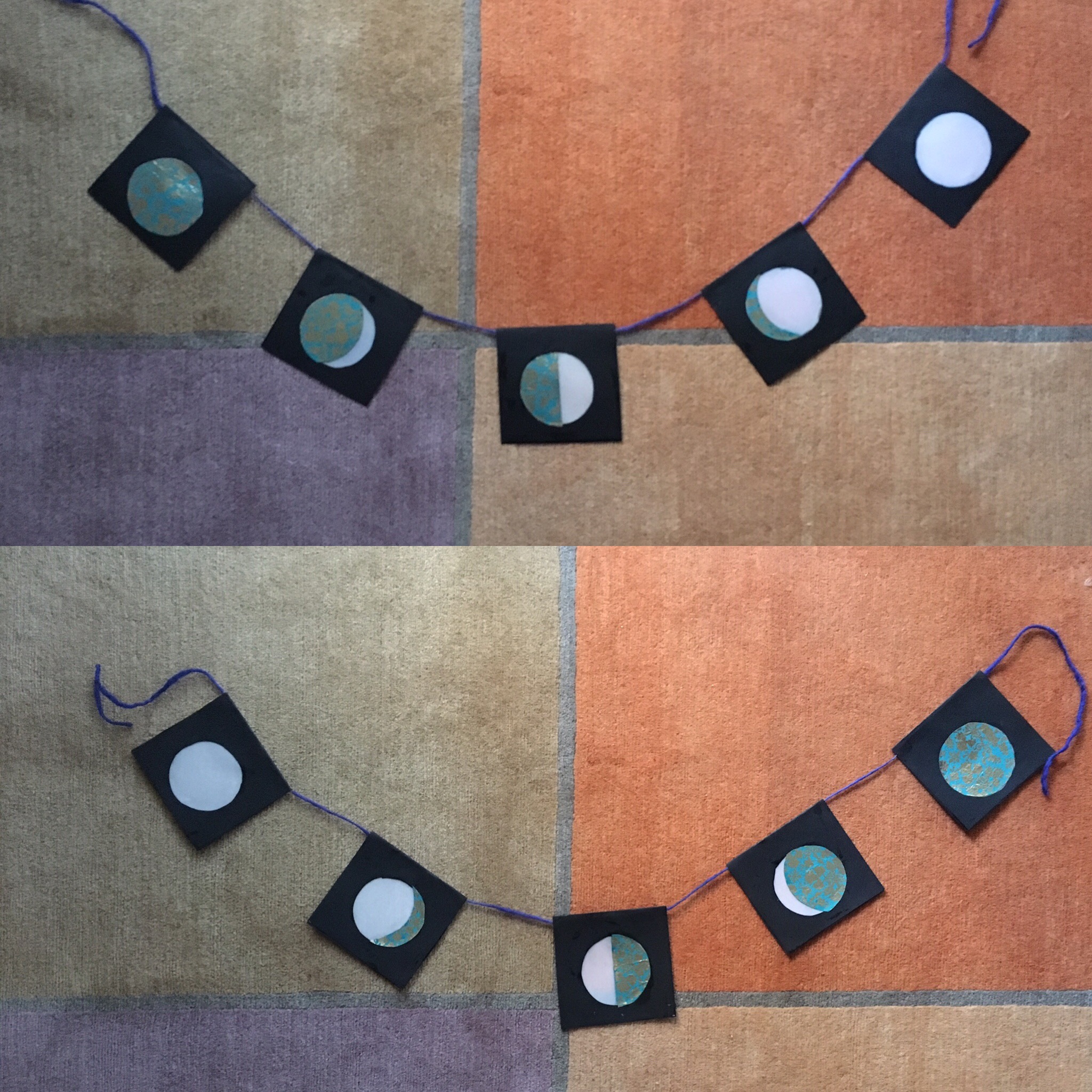
How to create a strand of five moon phase flags:
Step 1
Decide on the dimensions that you want your flags. If you want them to be 4” x 4” then cut each background paper to 8” x 4” because you’ll be folding them in half.
Cut all five of the background papers, then fold them so that the flags become two-sided squares.
Trace a circle in the middle of one the background paper. Cut the circle out on the front and back of the folded paper. You should be able to see right through both sides of the background paper. Repeat for all the flags.
Step 2
For the moons, cut five transparent papers a little less than 4”x 4” square so it will fit inside the folded over background paper. Glue the papers onto the inside of the background paper.
Step 3
Run string through where the crease is on the background paper and put glue on the crease so the string and flag will hold in place. Glue around the edge of the inside of the background paper and then fold it together a paper sandwich smoothing out any glue bubbles.
Step 4
Trace five circles on paper for moon shadows on the contrast color paper. Cut the circles out.
Cut one circle in half to use for the quarter moons. Cut out a crescent moon shape from both of the remaining two circles. Leave two circles whole - these will be the new moons. In all you will have two new moon circles, two halves, two crescents, and two gibbous moons. Save all the pieces for assembling the flags.
Step 5
The final step is to glue the waxing and waning phases onto the moon flags. In the northern hemisphere, the light of the waxing crescent moon begins on the right side. In the southern hemisphere, it begins on the left.
Lay out the strand of flags and begin by gluing the new moon circle in place, then continue with each phase until you get to the full moon.
Turn the strand over and begin with the full moon and then glue on the contrast paper until you end with the last circle for the new moon. This step is where the magic happens and the symmetry of the cycle is revealed. The waxing and waning are mirror images - all pieces of the whole.
Hang the flags in a way that they can be easily reversed after the new and full moon.
MAY THE MOON REMIND YOU OF YOUR WHOLENESS AND HELP YOU FLOW WITH CHANGE.
The 2022 edition of the New Moon Calendar Journal and Moon Mandala Wall Calendar are available in the shop! Order your copy today.
This simple and beautiful circular calendar establishes the new moon as the starting point for each monthly cycle. By using a circular calendar you perceive time in relation to nature more clearly, and patterns in your own experience become more apparent. It provides a structure for connecting to your inner wisdom and natural rhythms.


